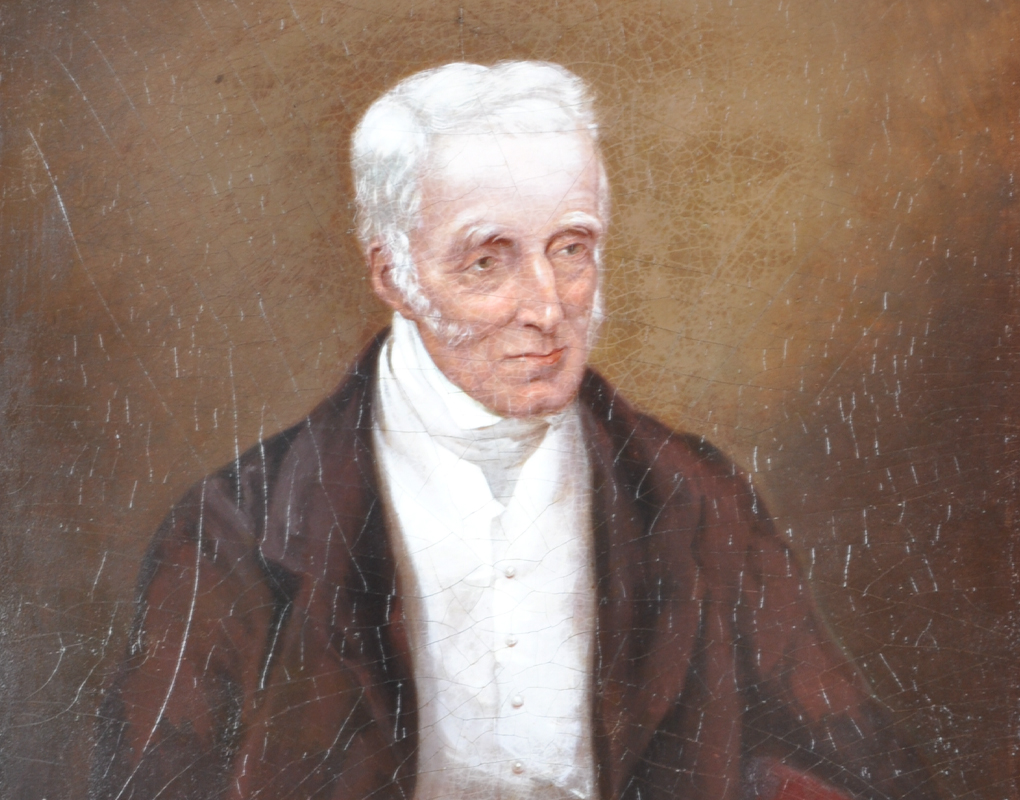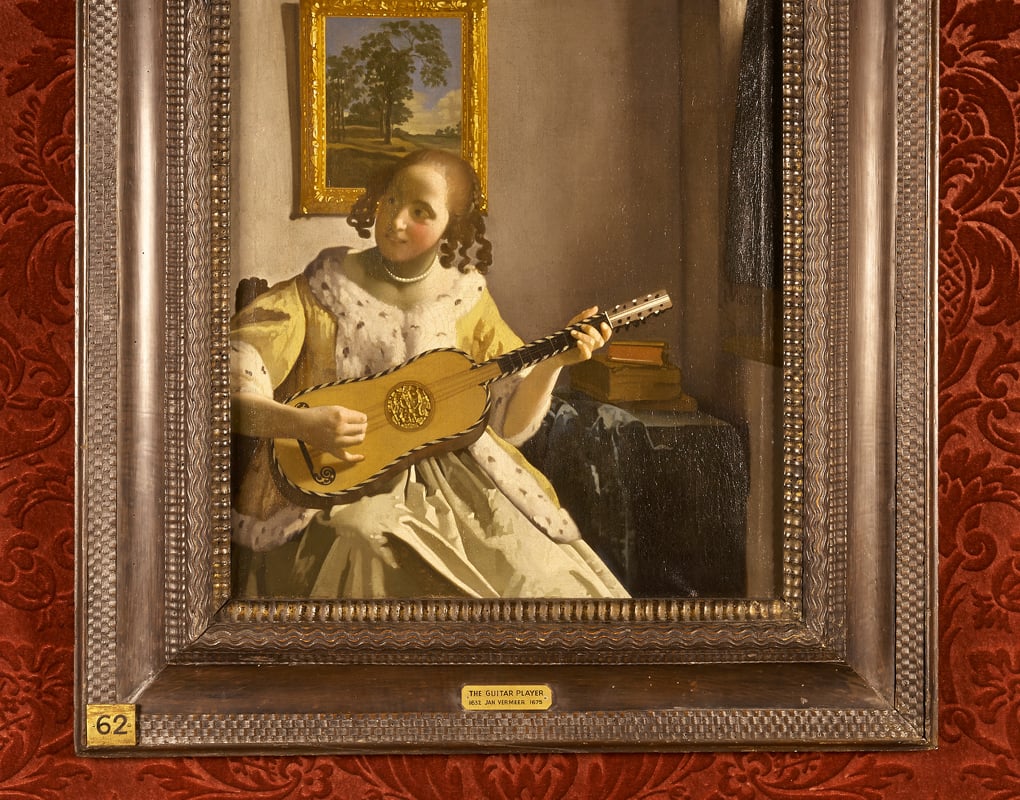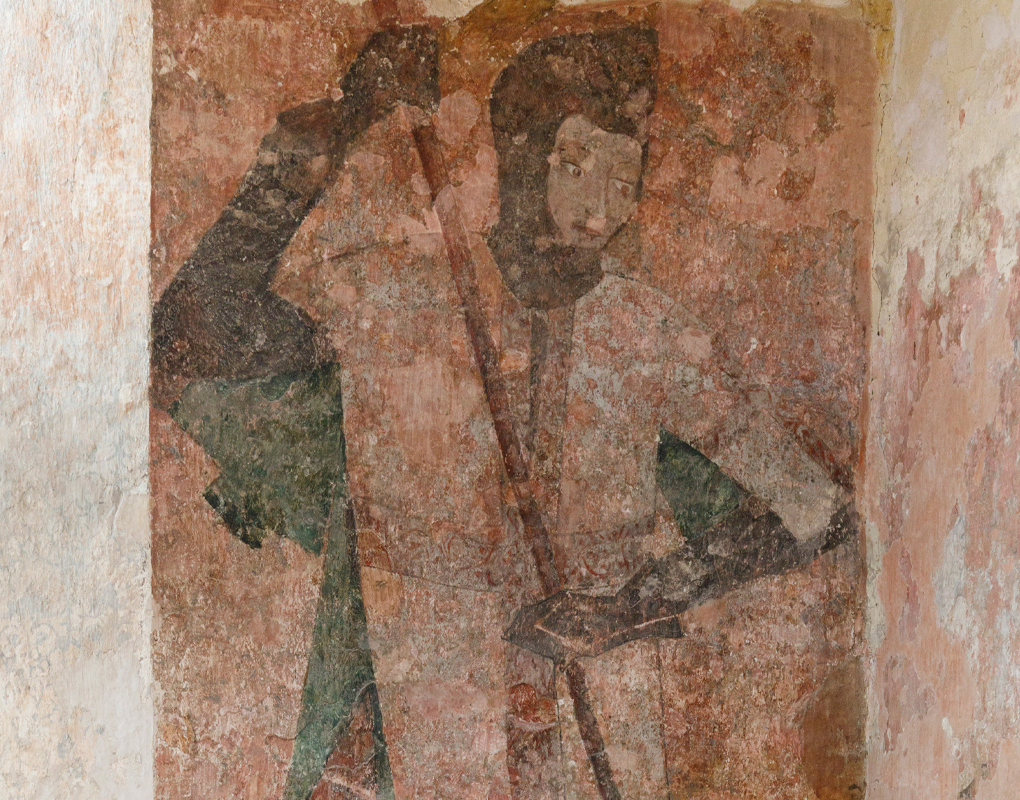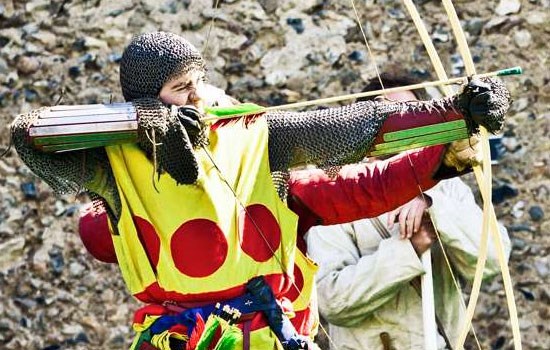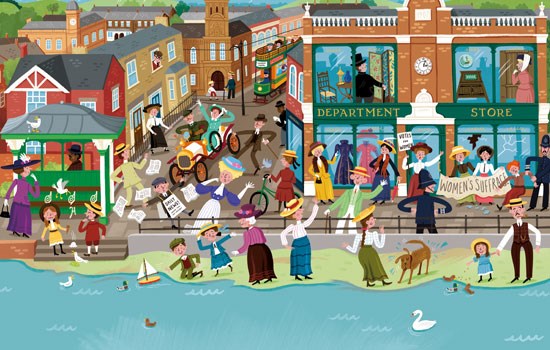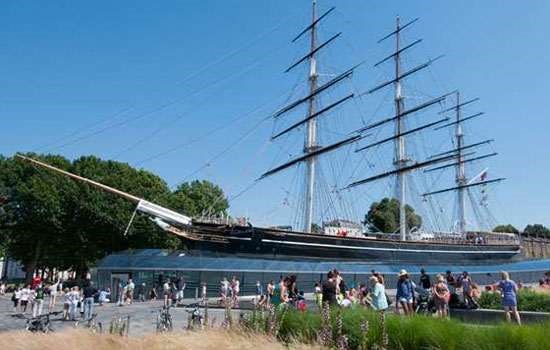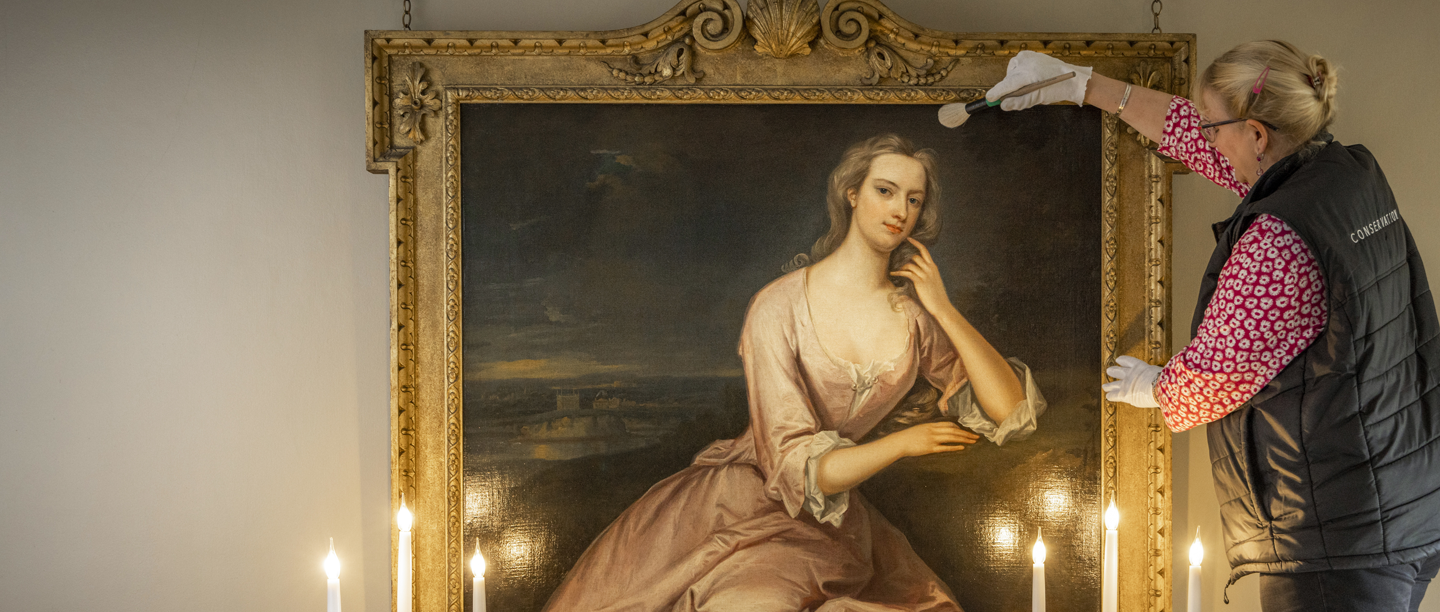
20 QUESTIONS QUIZ: PAINTINGS
Test your knowledge of the paintings in our collections with this quiz.
-
1. Approximately how many paintings are in English Heritage’s collection? A 400; B 800; or C 1,300
Answer: 1,300
English Heritage is responsible for the care and conservation of 1,300 paintings and their frames as well as 15 in situ painted decorative schemes on wood, paper or canvas. Most are located in our London properties and include key moments in western art history.
-
2. At which English Heritage property can you see the painting Titian’s Mistress?
Answer: Apsley House in London
Titian’s Mistress (1550–60) had originally belonged to the Spanish Royal Collection. The painting, along with nearly 200 others, was captured by the Duke of Wellington and his troops after the last major battle of the Peninsular Wars at Vitoria in 1813. They had been part of the baggage train of the fleeing Joseph Boneparte. King Ferdinand VII of Spain presented these paintings to the Duke in 1816. Despite having excellent provenance, and being catalogued as a Titian painting until 1911, the portrait was thought to be a copy or emulation of Titian. Cleaning and conservation in 2015 revealed it to be a genuine work by Titian, one of the most revered masters of European painting.
-
3. Which 17th-century socialite commissioned the theatrical wall paintings at Bolsover Castle in Derbyshire?
Answer: William Cavendish
Bolsover Castle was founded in the late 11th century by William Peveril, one of William the Conqueror's knights, but it was neglected from the mid-14th century. Its ruins provided the setting for the Little Castle begun in 1612 by Sir Charles Cavendish as a retreat from his principal seat at Welbeck, a few miles away. When Charles Cavendish died in 1617, most of the structure was finished. His son William – playboy, poet courtier and later 1st Duke of Newcastle – inherited the Little Castle and completed the interiors with the help of the architect John Smythson. What resulted was a kind of ‘toy keep’, housing tiers of luxurious state rooms. The exquisitely carved fireplaces and richly coloured murals and panelling of its exceptionally well-preserved and beautifully restored interiors still take the visitor on an allegorical journey from earthly concerns to heavenly delights.
-
4. Madonna of the Pomegranate has been identified as coming from the studio of which Italian Renaissance painter?
Answer: Sandro Botticelli
The painting, which is on display at Ranger's House in London, was long thought to be a later imitation of Sandro Botticelli’s Madonna of the Pomegranate. But following conservation work, it was revealed in 2019 to be a rare example by the artist’s own workshop. Bought by diamond magnate Julius Wernher in 1897, Madonna of the Pomegranate (Madonna della Melagrana) (c.1487) is the closest version of the famous masterpiece by Botticelli, now in the Uffizi Gallery in Florence, Italy. Showing the Madonna and Christ Child flanked by four angels, the title refers to the pomegranate that is held by the Madonna and Child to symbolise Christ’s future suffering.
-
5. The Archer Pavilion at Wrest Park is home to what particular style of wall painting?
Answer: Trompe l'œil
The inside of the Archer Pavilion in the gardens of Wrest Park is decorated with a stunning series of trompe l’oeil paintings that mimic architectural features such as columns, niches and statues. Painted around 1712 by Mark Anthony Hauduroy, these ‘trick of the eye’ decorations convince you that they’re three dimensional. The pavilion was built by renowned architect Thomas Archer for Wrest Park owner Henry de Grey, the Duke of Kent. The elaborate paintings, which include the de Grey coat of arms, showcased the family’s rising status.
-
6. When does Rembrandt's Self-Portrait with Two Circles date from? A c.1583; B c.1665; or C c.1741
Answer: c.1665
Rembrandt is one of the most celebrated artists in history. Over the course of his 40-year career he painted, drew and etched roughly 80 self-portraits. This painting, in the Iveagh Bequest at Kenwood, north London, was one of his last. It was begun around 1665 when Rembrandt was 59. Among the largest and most imposing of all Rembrandt’s self-portraits, it is celebrated for its technical brilliance and ruthless honesty, offering one of the most distinctive and defining images of the artist.
-
7. Where can the Wernher Collection of artworks be seen?
Answer: Ranger's House in London
This handsome Georgian villa on the edge of Greenwich Park is home to the unique art collection formed by diamond magnate Julius Wernher around 1900. One of the greatest private art collections ever assembled in Europe, it presents an extraordinary wealth of medieval, Renaissance and early modern works, including masterpieces of international importance. The house itself, built in 1723 and later the residence of the Rangers of Greenwich Park, remained home to aristocrats and royals until 1902.
-
8. The group of nine portraits by William Larkin at Kenwood date from which period?
Answer: Jacobean
The masterpieces of The Suffolk Collection at Kenwood in London are an important group of nine full-length portraits by the Jacobean painter William Larkin (c.1580–1619). Until the middle of the 20th century, Larkin was identified only as ‘The Curtain Master’ and his works referred to as the ‘carpet and curtain pictures’ owing to the distinctive carpets and metallic curtains used in virtually all of his known paintings. The works by Larkin in The Suffolk Collection are of particular importance because so many connected portraits remain together. The exact date and circumstances of the creation of the portraits are unknown but they were most likely commissioned by Katherine Knyvett, 1st Countess of Suffolk or her son, Thomas Howard, 1st Earl of Berkshire, perhaps to mark a major family occasion.
-
9. Which pope is depicted in this portrait by Diego Velázquez?
Answer: Pope Innocent X
This painting, which is on display at Apsley House in London, has produced over a hundred years of discussion. Velázquez’s original painting, completed in 1650, is in Rome at the Galleria Doria Pamphilj. Is the Apsley House version a copy that Velázquez took back to Spain with him? Is it the painting recorded in the Spanish inventories as part of the Royal Collection in 1772? There are several copies but the one in the Wellington Collection at Apsley House and another in Washington are the two considered the most likely to be by Velázquez. Since major technical and academic research was undertaken in 2006 we now present this painting as by the artist.
-
10. Which of the following was thought to have once been used as a 'protective coating' of the wall paintings at St Mary's Church, Kempley? A Milk; B Glue; or C Egg white
Answer: Egg white
This simple Norman church in Gloucestershire, remote from the village it once served, has the oldest timber roof of any building in England. Its greatest glory, however, comes from having some of the best preserved medieval wall paintings in Britain. Those in the chancel are particularly rare, dating from the early 12th century, and are the most complete set of Romanesque frescos in northern Europe. With the hostility to religious art during the Reformation, the paintings were hidden behind whitewash. After the paintings were rediscovered in 1872, all sorts of materials were mentioned as potential protective coatings, including egg white, shellac, ‘egg-varnish’, waterglass (sodium silicate), lime water and soluble nylon.
-
11. Can you unscramble the name of this painter, whose work is included in the Iveagh Bequest? SHY DEAL SOJOURN
Answer: Joshua Reynolds
One of the most celebrated artists in British history, Joshua Reynolds (1723–1792) dominated artistic life in the 18th century over the course of a career spanning more than 50 years. Kenwood in London owes its extraordinary holding of works by Reynolds to Edward Cecil Guinness, 1st Earl of Iveagh. Of the 63 paintings originally bequeathed to the nation by Lord Iveagh in 1927, 14 were by Reynolds. In the years since, these have been joined by three further works by Reynolds that were once owned by Lord Iveagh, given to Kenwood by his descendants.
-
12. Answer
Answer: Dido Belle
This portrait by Mikéla Henry-Lowe was commissioned for an ongoing nationwide exhibition 'Painting our Past: The African Diaspora in England'. Dido Elizabeth Belle (1761–1804) was raised as part of an aristocratic family in Georgian Britain. She was the illegitimate daughter of a young black woman named Maria Bell and a Royal Naval officer, Sir John Lindsay. Dido spent much of her life at Kenwood on Hampstead Heath in north London. She lived there with her great-uncle William Murray, 1st Earl of Mansfield, the Lord Chief Justice. He presided over a number of court cases that examined the legality of the slave trade.
-
13. In which county is Longthorpe Tower, which is home to spectacular 14th-century wall paintings?
Answer: Cambridgeshire
The stone tower at Longthorpe was built by Robert Thorpe, a lawyer, between about 1290 and 1300. Designed as much a status symbol as a refuge, the tower is in itself an unusual feature in southern England. But its great renown derives from the spectacular wall paintings in the main first-floor room. Added about 1330, they are among the most impressive examples of medieval domestic wall painting in northern Europe.
-
14. At which northern property can you find graffiti by First World War conscientious objectors?
Answer: Richmond Castle
Covering the delicate lime-washed walls of the 19th-century cell block at Richmond Castle, North Yorkshire, are thousands of graffiti. Many of these were drawn by conscientious objectors who were held at the castle for refusing to participate in the First World War on moral, political or religious grounds. Among the conscientious objectors detained at Richmond Castle were the men who have become known as the Richmond Sixteen.
-
15. Answer
Answer: The Duke of Wellington
This restored portrait of the Duke of Wellington by Jacob Solomon was taken from an 1844 daguerreotype. They can be seen together at Walmer Castle and Gardens in Kent. Built on the orders of Henry VIII to defend England's southern shores, Walmer Castle later became a home for the Lords Warden of the Cinque Ports – among them the Duke of Wellington, who died at the castle in 1852.
-
16. Can you name any of the fruits, vegetables or nuts shown in The Vegetable Seller at Audley End House?
Answer: Cherries, hazelnuts, walnuts, cabbages, cauliflowers, kale, globe artichokes, plums, pears, apples, cucumbers, peas, common beans, broad beans
The Vegetable Seller, an important 16th-century Dutch painting, was reinstated to the art collection at Audley End House in Essex in 2021. This marked the first time in centuries that the painting was seen as it was originally conceived, having been restored to its former glory by conservators over a two-year period. Our conservation experts now believe they have uncovered strong evidence to link the work to the Antwerp-born painter Joachim Beuckelaer (c.1535–75) and it may even have been painted by the artist himself. Beukelaer was known for his influence on the development of still life art in Northern Europe and Italy, whose most famous works include The Four Elements, in the collection of the National Gallery, London.
-
17. A masterpiece by Claude de Jongh (c.1603–63) that is on display at Kenwood shows which former London landmark?
Answer: London Bridge
Old London Bridge is one of the most popular paintings in the Iveagh Bequest at Kenwood, north London. Painted in 1630, it is the work of the little-known Dutch artist Claude de Jongh (c.1603–1663) and is considered his masterpiece. London Bridge was begun in 1176 and for centuries was the only stone crossing over the river Thames. Spanning more than 900 feet, it was the longest inhabited bridge in Europe and was considered a wonder of the world. De Jongh’s masterpiece provides a unique record of both this remarkable structure and the vernacular architecture of the city that would be engulfed in 1666 by the Great Fire of London.
-
18. Answer
Answer: Johannes Vermeer
The Guitar Player dates from c.1672 and is one of only 36 known paintings by Johannes Vermeer, an artist who specialised in depicting everyday life in domestic interiors. A young girl, possibly his daughter Maria, is interrupted from her guitar playing, as the string continues to vibrate. Vermeer has seated the girl so far to the left that her arm is cropped by the edge of the painting.
-
19. Which 18th-century poet commissioned the portrait of Henrietta Howard that can be seen at Marble Hill?
Answer: Alexander Pope
The portrait of Henrietta Howard was painted by Charles Jervas in 1724 when the initial designs for her new house, Marble Hill in London, were under way. It was commissioned by her close friend and fellow Twickenham resident Alexander Pope as a companion to a portrait of the writer Lady Mary Wortley Montagu. By 1784 it was hanging at Horace Walpole’s home, Strawberry Hill.
-
20. Answer
Answer: St George
Begun in the late 14th century, Farleigh Hungerford Castle in Somerset was for 300 years the home of the Hungerfords, a family that after distinguished beginnings suffered a series of disasters and scandals. The chapel of St Leonard stands in the outer court of Farleigh. One of the most notable features of its interior are the remains of 15th-century wall paintings primarily commissioned by Walter, 1st Lord Hungerford, when he refurbished the chapel in the early 1440s. Featured in the wall paintings is a large figure of St George, patron saint of England and of the Order of the Garter, and a now scarcely traceable figure of a kneeling knight wearing a tabard of the Hungerford arms.
You may also be interested in


